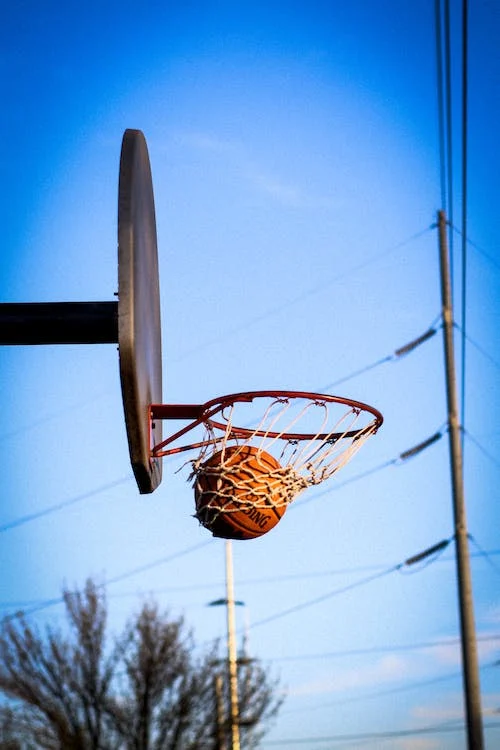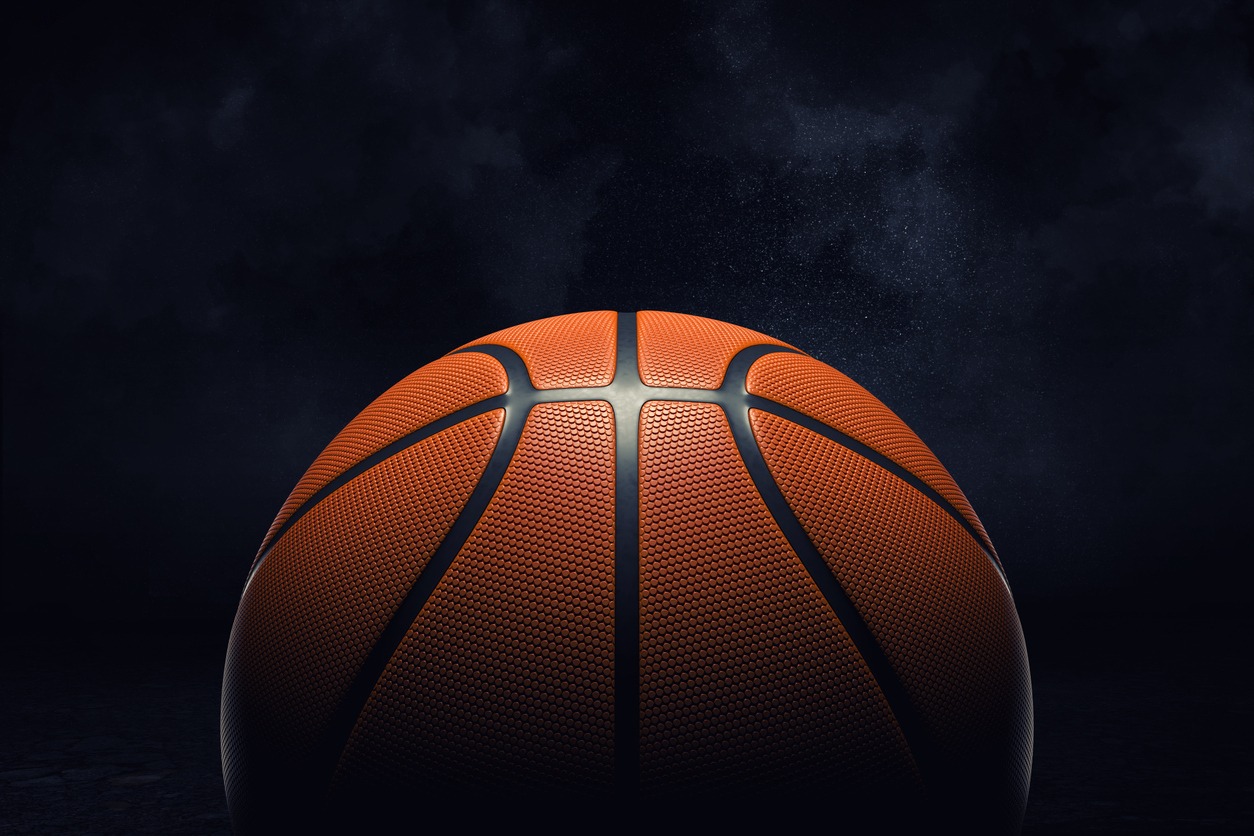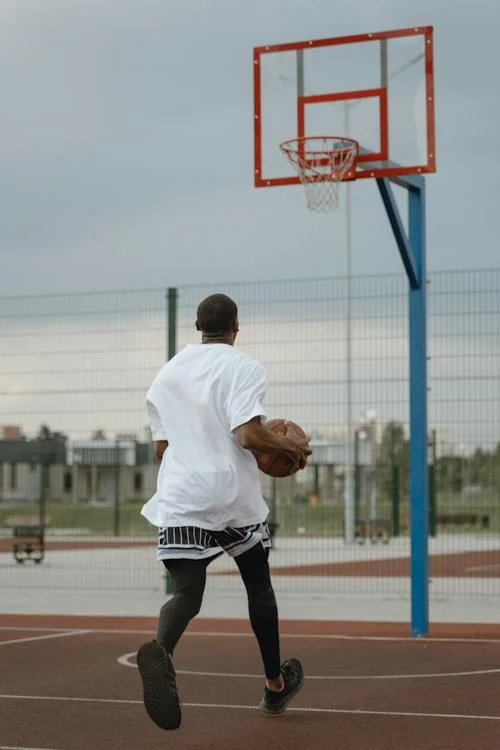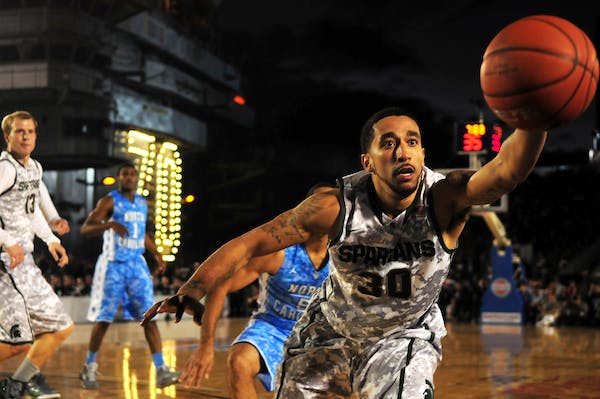How to Improve Your Ball Handling in Basketball

Basketball is as much a game of mental dexterity as physical acumen. When you're in the game, you have to make quick decisions while also being able to execute your top physical form. However, this level of efficiency is only achievable by learning proper ball handling. Ball handling teaches you to treat the ball like a part of your body. Expert players are so adept at it that they do it without thinking. This allows them to be exceptionally agile and precise.
Therefore, to help you develop those qualities, we bring you this article that covers the basics of ball handling and drills you can incorporate to become a formidable player.
Mastering the Basics of Ball Handling
Before moving on to dribbling drills, it is vital to understand the fundamentals. There are a few basics of ball handling regarding stance and movement on the court. Here's what they are:
1. Correct Dribbling Stance
After selecting the right basketball, the first step towards becoming a skilled ball handler is practicing a low and nimble athletic stance. You should practice keeping your knees slightly bent, feet wide, and butt down while dribbling or moving on the court. This will help you maintain balance, speed, awareness, and explosiveness.
On the other hand, standing straight during dribbling drills will put little stress on the muscles that your body will use during a game, which is why you should always be in an athletic stance, even while practicing.
2. Don't Look Down
If you're a novice, you might naturally look at the ball while dribbling. However, this classic mistake will steal your focus from the hoop, court, opponents, and teammates. Practice dribbling with your eyes forward and improve your mind-muscle connection to handle the ball perfectly without looking at it.
Looking forward will also allow you to capitalize on different winning opportunities during the game, which you can miss if you were looking down.
3. Dribble Low
Practicing a low dribble is essential as it allows you to be more agile. Moreover, the higher your dribble is, the easier it is for a defender to steal it.
Practicing your dribbling would be much easier if you have a high-quality basketball during practice. For tips on how to get the best basketball, you can read our Guide to Selecting the Right Basketball.
4. Keep Elbows in and Dribble with your Fingertips
Keeping your elbows tight and close to your body will give you better control over the ball. You should also practice dribbling with your fingertips and moving your wrist rather than with the palm of your hands. This will protect you from adding extra spin and curve to your ball, ultimately contributing to better control.
5. Practice with Both Hands
Players are naturally inclined to use their dominant hand when dribbling. However, there is a clear advantage if you know how to use both hands efficiently. It opens up more possibilities and makes you more unpredictable for your opponents. You also improve your coordination by using more parts of your body to handle the ball.
6. Always Protect the Ball
You should always strive to keep your free arm in an "arm bar" position. An arm bar position is when you bend the elbow of your free arm and keep its forearm in front and between your opponent and the ball. This makes it harder for the defender to make the steal, and is one of the essentials you must learn and practice before moving on to more advanced drills.
Basic Dribbling Drills
Stationary dribbling drills are some of the most basic exercises used to teach dribbling. These drills improve the feel of the ball, court awareness, hand-eye coordination, and proper dribbling technique. The best thing about these drills is that players can do them anywhere, even outside the court.
Here are some of the most common and effective stationary dribbling drills to incorporate into your training program.
1. One Ball Pound Dribble
Practice basic dribbling stance and hand placement by dribbling the ball in a single spot with the tip of your fingers. You can also keep your free arm in an arm bar position to learn how to protect the ball while dribbling. Bring variations into the drill by dribbling the ball at heights such as ankle, waist, or shoulder.
2. Figure 8 Drill
Bend your knees slightly and place your feet shoulder-width apart. Start by dribbling with one hand and then passing the ball through your legs to the other hand. Repeat the process with the other hand to move the ball in a figure 8 pattern.
3. Spider drill
Spider drill is one of the more advanced stationary drills. You aim to keep the ball dribbling between your legs at all times while switching your hands and dribbling from the front and back. Start by standing shoulder-width apart and dribbling the ball between your legs.
As you're dribbling, change the hand in front of the body without letting the ball stop. Then move the free hand behind your back and start dribbling with it. Then shift the ball to the free hand behind your back. And then, move both hands front and repeat the process for at least 60 seconds.
Advanced Dribbling Drills
Now that you have learned some basic stationary and moving dribbling drills, here are some more advanced moves you can gradually incorporate into your basketball training.
1. Crossover dribble
The crossover dribble is an efficient move for maintaining ball control while running up the court under heavy defensive pressure. It is also one of the primary moves in a point guard's arsenal.
Start from one end of the court with the ball in your hand. Step forward with the same foot as your ball hand, and dribble the ball towards your empty hand. Ideally, the ball should reach your hand as your foot touches the ground. This move is about shifting the ball from one hand to the other effortlessly and without interrupting your movement.
Start by doing this drill at a walking pace, and then move gradually up to a jogging pace, and then running. This drill will improve your footwork and your awareness of the ball.
2. Behind-the-back dribble
You may have seen top basketball players crossover the ball behind their backs. That is what "behind-the-back dribble" is. It is an advanced and practice-intensive move that has many advantages. It adds a significant element of surprise and makes it harder for your opponent to steal the ball.
To practice it, start by doing it in a stationary position. It will give you awareness and the ability to handle the ball without seeing it. You can do it while jogging and running as you become more adept. The key is to stay in a straight line while doing it.
As soon as your outside foot starts moving forward, dribble the ball behind your back so that it reaches your other hand. Like a crossover, the ball should ideally be in your other hand when your outside food touches the ground.
3. Between-the-legs dribble
Another advanced basketball move often performed by pro players, between-the-legs dribble allows you to pass the ball in a single dribble between your legs and into your other hand. It is an efficient move for dodging the defender and reducing the chances of a steal. However, it is also challenging to execute when you're in the game.
Start by going into a split stance(scissor position) and moving your outside leg forward approximately at an angle of 45 degrees. Just before your outside foot touches the floor, dribble the ball across the space between your legs and into your other hand. As soon as you catch the ball with your other hand, you can either shift it to your primary hand or keep dribbling with the other hand. The key is to stay low as it will reduce the space the ball has to travel. This will allow the ball to reach your other hand faster without touching your leg or going off course.
Advanced Cone Drills
You can incorporate cones to take your advanced drills up a notch. Cone drills will develop excellent spatial awareness and footwork. Your goal is to start from one end and zig-zag the ball between the cones depending on the move you're practicing.
Let us take some of the advanced moves and see how you can put a spin on them with cones.
1. 3 Cone Crossover Drill
Place three cones in a line, almost two feet apart, and move between them while crossing over the ball from one hand to the other each time you pass between the cones. The key is to stay low and be fast. To the end, run with explosiveness towards the hoop to score.
2. Inside Out Crossover
This is a take on the popular "in and out" or "fake" crossover dribble. You start by placing four cones in a line, almost two feet apart. As you move toward the first cone, do a fake crossover by moving the ball with your hand towards the middle of your body, like you're doing a crossover, and then bringing it back to the other side while keeping the ball in the same hand. Repeat this move as you pass between the cones every time.
You can also practice the true crossover dribble as you pass between the cones.
3. Between the Legs
Almost like the "between the legs" drill discussed earlier. The goal here is to practice the dribble while moving between the cones. You can add as many cones as you like.
Incorporating Game-Like Situations
Once you have developed a proper stance and worked through different drills, it is important to simulate real game situations. Many players struggle in games because practice is nothing like a real game. Therefore, you can do the following things to create game-like conditions for your players.
1. Two-ball dribbling drills
Various two-ball dribbling drills are excellent at creating the mental stress of handling multiple things simultaneously. They are also a great way to develop ambidexterity in players.
For example, there is a two-ball dribbling drill where you have to dribble one ball at a different height than the other ball. Similarly, another drill requires you to dribble two balls at different speeds. These are very challenging to practice but promise impressive results.
2. Incorporating defenders
You can make things more challenging and real by adding defenders as they're practicing their moves. This will put them closer to a game-like situation and allow them to learn what to expect from the opposing team's defense. Start by using one player as a defender and then adding two as the player becomes more efficient.
3. Game simulation drills
Create game simulation drills for your players by focusing on each skill of passing, shooting, dribbling, rebounding, and defending. There are various drills to train each section of the game, and you can make it more challenging by dedicating half the team as an opponent.
Importance of Physical and Mental Conditioning
Physical and mental conditioning is paramount to becoming a successful basketball player. If your body is not fit for challenging drills, it might not last in the game. Similarly, having a winner's mentality and self-confidence will allow you to tackle and learn from challenges and losses.
A comprehensive training should focus on improving aerobic capacity, muscular strength, explosive power, agility, and speed. A training regimen should include weight and cardiovascular training to target these fitness goals.
Players should also be taught to practice mental attributes like concentration, team work, self-confidence, goal-setting, mindfulness, and visualizing success. Many great players like Michael Jordan are known to be so efficient at positive visualization that their opponents feel they've lost even before the game ends. This level of self-confidence is achievable by developing mental toughness and learning from your mistakes on the court. It is also essential to develop a thick skin and not be swayed by discouraging remarks from the opposing team.
Final Words
Basketball is a remarkable sport that tests your intellect, presence of mind, concentration, physical strength, agility, and speed. It helps you become a better and faster decision-maker. Incorporating the drill recommendations in this article will help you climb the ladder of basketball expertise quicker. Ultimately, you will be able to create a comprehensive training regimen that covers both mind and body.




